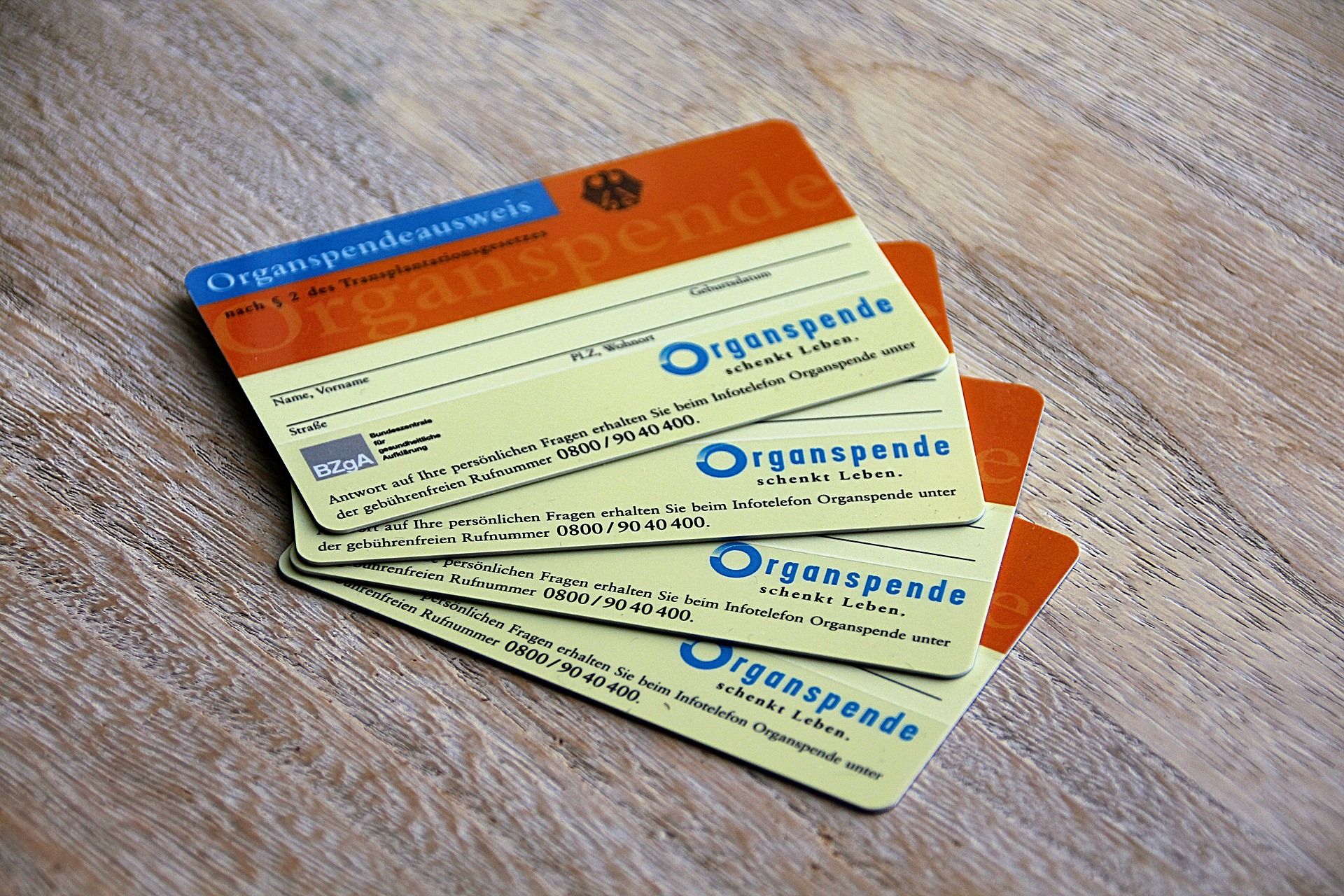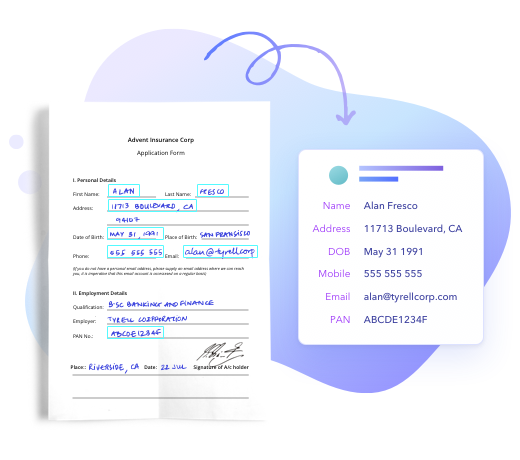
[ad_1]
Introduction
Insurance is one of the essential contracts made by individuals, corporations, and industries for financial protection or reimbursement against losses. It’s one of the most cautious, heavily regulated industries in the world. With the increase in the latest technologies, insurance activities are becoming more automatable and the need to attract and retain employees with digital expertise is becoming critical.
In this blog, we’ll look at how Computer Vision and Deep Learning techniques are used in digitisation and automation to insure different assets. Furthermore, we’ll explore examples wherein Computer Vision and Deep learning techniques are used in the insurance industry.
Here are a few types of insurance that make use of automation by deploying deep learning and computer vision techniques,
- Home Insurance
- Health Insurance
- Fire Insurance
- Product Insurance
- Motor Insurance
The Advantages of AI in Insurance for Automation
Below are the advantages that greet us when automation is amalgamated with insurance,
Reduce time
Applying for insurance and claiming it when the property is damaged is a long-winded process. Submitting all your original ID proofs to your assets takes a lot of time and human work. This is where automation can be done using computer vision techniques and deep learning, with which, you can simply scan all the documents, cross verify them through a database provided, and instantly see if the documents are original or not. This is a simple example of explaining how modern automation techniques can speed up the insurance process.
Unbiased Examination
If there is any asset or property damage such as car accidents or broken phone screens, in insurance industries, these are manually verified and the damage is rated at different levels. When it comes to verifying or examining an asset with a model that is already trained, the examination part will be more unbiased, and it gives all the precise locations where exactly the damage is made. For example, below are the images where a computer is recognizing the damaged parts of a car and a phone.
Process Streamlining
As discussed, claiming insurance requires a lot of paperwork, there should be more manpower involved in it. With automation, we can store all the information at once place and make sure that the customer claims his insurance on time without any delay in a proper streamlined channel, from gathering all the information and proofs to reporting if an insurance can be claimed or not. This also allows the customer to claim the insurance on time.
Additional Insights
Using automation we can draw new insights that can be used to adjust, and eventually optimize, the way insurers price and distribute their products and services, and manage risk based on the damage.
Automation in the Insurance Industry
Claiming insurance is one of the most tedious and time-taking tasks, it requires a lot of documentation and examination. With automation, our main aim is to save time, costs and energy for both the insurer and insured to successfully conclude a claim.
Imagine there’s a damaged property, these are the steps that are involved in a general insurance process.
There could be endless more steps depending on the asset that we claim insurance for. Automation seems like a good option to speed up this process. Various techniques have been tried to make insurance user-friendly. However, before jumping into modern methods for streamlining insurance, let’s look at the reasons behind the automation of the insurance processes.
Minimal Intermediary Intervention
Usually, insurance plans and processes are carried out by several agents offline. Today, prominent insurers have made online provisions whereby you can purchase the policy you need. With automation, the right plans can be delivered to the right customers without any intermediary.
Gain from Responsible Behavior
Automation gives insurers crucial data and insights on the customers lifestyle that can come handy while pricing a new policy or renewing an existing one. For example, through smartwatches and telematics, health and auto insurers are able to capture crucial metrics on the customers daily activities and driving behavior and point out areas that need attention.
Detection of Fraud
There are several plans and insurance frauds that not only mis-sell insurance packages but also seriously weakens the entire business in the insurance industry. As automation is backed with a lot of data and machine learning, there are very fewer chances of fraud. Claim workflows are being configured with CV and Deep Learning to ensure fraud is caught early on.
Intermediary Fraud
It’s still possible for multiple parties in the system to collude to defraud the insurer. If the person inspecting the claim and the insured collude on a claim and there aren’t enough checks and balances it becomes easy to create intermediary fraud.
Bring Down Error Rates
By leveraging automation in the insurance sector we can drastically reduce the error rates and increase productivity. A few examples to bring error rates down through include entering, scanning, validating and prioritizing the information where manual reviewers are slower as well as less accurate than the state-of-the-art algorithms that leverage deep learning for better performance.
Consistency
Insurance has always been fraught with subjectivity, each surveyor and adjuster has a slightly different way of processing a policy or claim. Reliance of humans adds a strong bias, where each individual adds an inherent bias. The utilization of AI removes the subjectivity since the same algorithm is making all of the decisions.
Quick & Easy Claim Settlement
With the automation process, everything can be done online, right from applying to a company, to claiming your insurance for a damaged asset by attaching relevant documents. All the proofreading and verification is done through these automated models. This is how the exchange of data on cloud-based platforms leads to quick processing and settlement of claims. These days, there are various chatbots being used to capture insurance information directly from the customers. Additionally, chatbots are being configured with CV and Deep Learning, wherein, as soon as you upload your photo, you get a quick reply if you can claim the insurance or not without any mediator in between.
Applying AI to Insurance Problems
Deep Learning is booming in every industry in the present market. This is because of its efficiency to reduce the manual work hours spent on a given problem. It automates the task by making the machine understand the problem to come up with a variety of solutions. The way it accomplishes this is by learning from the data we feed to it.
Insurance industries are getting digitised using these Deep Learning techniques, and are making our way of lives, a lot easier. The quickening of rendering services to the customers, detecting malicious activities, etc. are being done with a lot more ease than that has been done earlier. Here are a few areas in insurance where the Deep Learning techniques have generated some remarkable results,
Accelerating the process
Insurance comprises a melange of requests by the customers every hour. And the process of going through each and every step is an even frustrating procedure. To take in all the legal requirements and stack them up might at times consume more time than we expect. Nowadays, many companies are moving onto automating the process, right from the initial reports to finally contacting the customers. This eliminates the need for the human workforce and thereby enforces them with more demanding tasks.
Look at Lemonade, an insurance company that uses Artificial Intelligence to process insurance claims by employing a chatbot. And there’s Insurify, which uses a virtual agent to verify the customer’s data and then recommends the best insurance that the customer can opt for.
Rating the risk factors
Assessing the risk factors and accompanying them with the right price serves as an important factor in deciding the right insurance policy. Conventional techniques of looking into fewer affecting factors might not give a complete picture of which insurance to choose for the problem in hand. However, using Deep Learning, a number of patterns could be extracted and verified to output the accurate results.
A fitting example is Zestfinance that gauges risk and approaches the customers with the right data to increase the approvals. It gives deeper insights and allows to add more creditworthy borrowers to grow sustainably.
Improving underwriting
Underwriting is to assess the creditworthiness of a potential customer. To do so, traditional insights might not prove the credibility of the risk. However, Deep Learning provides a set of tools and techniques that take in humongous amounts of data, process it, and consolidate the results such as customer data, insurance claim, membership data, premiums and benefits provided, etc. This outputs precise results and reduces the losses incurred by executing the required set of actions, which in turn helps in fraud detection at an incredible rate.
Let’s take Fly Reel as an example here. It’s an AI underwriting solution that uses Computer Vision to speed up the underwriting process. The underwriter whoever needs to look after the reimbursement against the claims is given data that displays the overall insights and helps them in arriving at the right decisions.
Predicting Customer Lifetime Value(CLV)
CLV is the difference between the revenue gained and the expenses incurred. This metric is taken into account by the insurance companies to estimate the potentiality of the customers against the profitability of the insurers. Deep Learning can help in forecasting customer trends (cross-buying) that affect the company’s income in the future. It helps in conducting assessments to check whether a customer is a potential asset to the company or not.
Personalising the customer’s experience
The needs of each and every customer varies in accordance with their requirements. One single policy wouldn’t fit the bill right for all the customers. Thus, customization is necessary to take in the user inputs such as individual preferences, hobbies, attitudes, lifestyles, etc. Now, when Deep Learning models come into the picture here, they process these inputs and provide the customers with their matching penchant, and thereby, puts the customers on the hook all along.
Avaamo is an intelligent chatbot that interacts with the customers to get to know their details with respect to the insurance industries. It streamlines customer services, gathers data, and chalks out claims that suit the customer needs.
Reducing Fraud
Frauds are everywhere when there’s a possibility of doing good, a few can misuse it and commit fraud. Insurance industries have come across many such frauds, and mitigating them is one of the biggest concerns in the current insurance market. Curbing the fraud perpetration can lead to profits and an accurate estimation of the company’s revenues.
Deep Learning here, can be used to train a model with possible-to-be fraudulent claims, extract the insights, and stop the further possibility of undetectability of the fraudulent claims. Depending solely on human intelligence might not give accurate results, however, a machine can quicken the process of identifying fraudulent actions, and henceforth, avoids the possibility of falling into the trap.
H2O.ai is a machine learning platform that helps the developers at insurance companies to build smart applications in detecting the frauds and managing the risks.
Computer Vision for Insurance – Applications
Computer Vision is a technique to assess the images/videos the same way a human being does. It is the capability of a computer to identify, process, and analyze the image. When we look at a picture and think about what the image is about, our brain instantly provides us with an answer. Apparently, the time to think is in nanoseconds. In the blink of an eye, we come up with an answer. However, a computer isn’t as intelligent as a human’s brain is. It needs to be trained with the appropriate set of parameters to tackle this question of identifying an image. This is where Computer Vision comes into the picture. An image is analyzed as a pixel of values, and all the computations are based on the same set of pixel values and the arrangement of those.
Moving on to the insurance industries, there are use cases wherein images are to be analyzed. Say, your car has met with an accident, and the bonnet got damaged. Imagine you’ve insured your car previously. So, what you do is contact the adjuster to be able to claim for your insurance. The adjuster manually takes pictures of your car, submits it to the insurance company wherein the external data is taken to assess the payout. Manually executing these steps takes a few days, but when automated, it happens quickly and saves time for other demanding claims.
Let’s examine a few use cases in which images play a crucial role to claim insurance. Also, let’s look at how computer vision can actually play its role in these scenarios,
Assessing Roof Damage using Aerial Images

When the roof of a building is damaged, an adjuster needs to climb up to the roof and check if there’s any damage incurred. When the roof isn’t high-risk, this isn’t hazardous, however, when the roof is high-rise, it’s difficult for an adjuster to assess the credibility of the damages. According to the United States Department of Labor, property adjusters on average experience 78 injuries per million site working hours, which is four times the injury rate of a construction worker. Thus, to avoid such issues, a drone can be employed where there’s no human intervention except for the operation of the drone. It’s safe, reliable, and efficient.
Photo Claim Service for Damaged Vehicles

As explained previously, manual examination of damaged vehicles is a complicated task and consumes lots of time. To ease the pain, computer vision can be used to capture the pictures of the vehicle, and thus, look for damages. For instance, ICICI has partnered with Microsoft to enable AI-enabled car inspection feature in its mobile app called, Insure. This has reduced the time that’s usually consumed in claiming for the insurance from days to mere minutes.
KYC automation for onboarding

Customer onboarding is a time-taking process in case of the insurance companies. It takes a good many days to completely know your customer and thereby, process the insurance. It’s reported to be around 10 days when done manually. Besides this, the reported error rate is also said to be high due to manually checking and evaluating the documents submitted by a customer which hinders the business growth. To overcome this persisting problem, computer vision can be employed to automate the scanning of documents, insurance applications, and forms. The data can be extracted in no time and evaluated for proceeding with the insurance process. With this, repetitive mundane tasks can be automated by achieving speed, accuracy, efficiency, and optimal resource management.
OCR for document digitisation

Insurance companies are challenged with providing customers the updated data in a timely manner. The updations happen on a regular basis due to enhancements in the legal procedures and laws governing the insurance. Therefore, we need to ensure that the information is processed correctly and the documentation is done accurately. To arrive at error-free results, we can use OCR for document digitization.
The electronic conversion of scanned documents or photographic images of handwritten text into computer-readable documents can be achieved using Optical Character Recognition (OCR). It helps in strategic customer acquisition, enhances customer service, improves margins and profitability, and provides high-precision predictions. When computer vision is used along with OCR, it helps in effectively understanding each and every pixel. This then allows the data to be compared with the databases, and get validated, hence, reducing the cost incurred by speeding up the process.
The Nanonets API
Nanonets provides several solutions for the insurance industry, spanning several use cases and business problems.
These solutions include –
Mobile Insurance

Mobile customers frequently buy insurance at the time they buy new phones. In case a phone is broken, the customer can claim insurance which involves raising a request with images of the broken phone. Claim verification involves detecting damages/cracks, IMEI number and tempered glass presence, all of which can be automated with Nanonets. Check out our blog on how to detect scratch in mobile phones using Nanonets.
KYC automation

At the time of opening of savings bank account, fixed deposit, mutual fund, insurance, etc, the customer needs to submit address proof and a photograph. These documents commonly are PAN Card, Driver’s License, Aadhar Card, etc. Nanonets can help Insurance companies verify documents, check for fraud, extract information and make reviewing faster. Check out our blog on automated KYC verification.
Car Insurance

A severe car accident can leave a lot of people shaken up. Along with emotional trauma, car accidents can cause heavy damages and cost the owners a lot. In such a situation, a simple gesture to reduce the aggrieved person’s inconveniences can go a long way. Using Nanonets, insurance companies can automatically detect damages in a car image, process the kind of damage it is (dents, scratches, rust or anything else) and process claims without the need for manual review.
Forms Digitization

Traditionally for an insurance company dealing with invoices and receipts needs to involve multiple manual reviewers going through each invoice to reduce the chances of error. With Nanonets, the company can read medical invoices and automatically review the receipts, extract important fields out of them, check whether the invoices are legitimate and process claims accordingly. All this data can be stored and retrieved anytime for the company as well as the client’s benefit. Similarly, forms can be digitized and information extracted, reviewed, logged and retrieved with ease to enable easier onboarding processes.
You can check out the Nanonets crack detection demo here and the OCR demo here.
To test out our GUI based solution, simply head over to https://app.nanonets.com, login using your email and start building custom models.
Conclusion
We learned about the different ways automation can be applied in profitable and beneficial ways in the insurance industry. We explored how deep learning is being applied for insurance applications and how it can help automate a large amount of processes including customer onboarding by digitizing documents and automatically extracting information from ID cards. How KYC procedures can be automated and the reviewing procedures required for mobile insurance and car insurance can be done using computer vision techniques. Hope you enjoyed the article.
[ad_2]
Source link